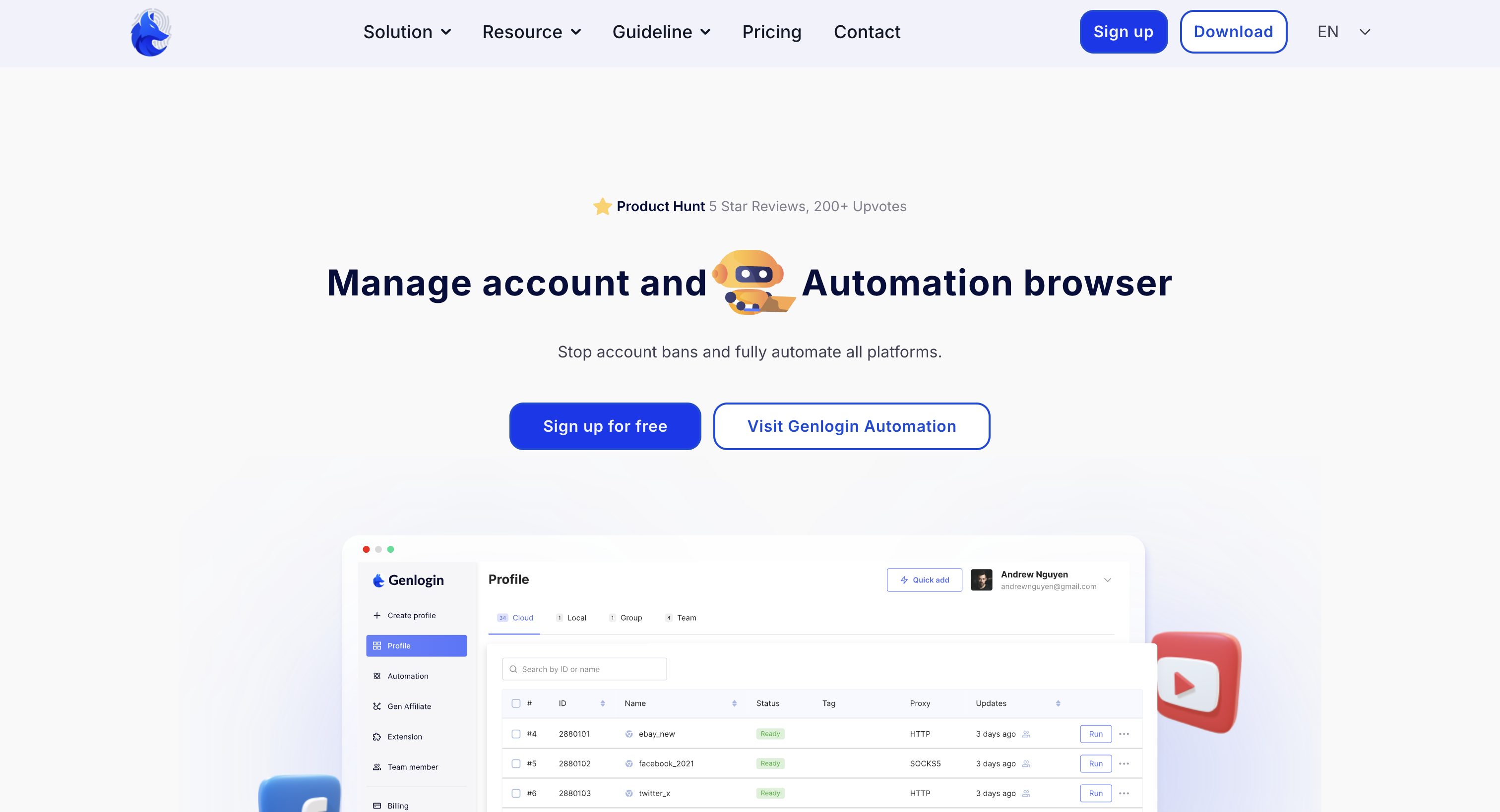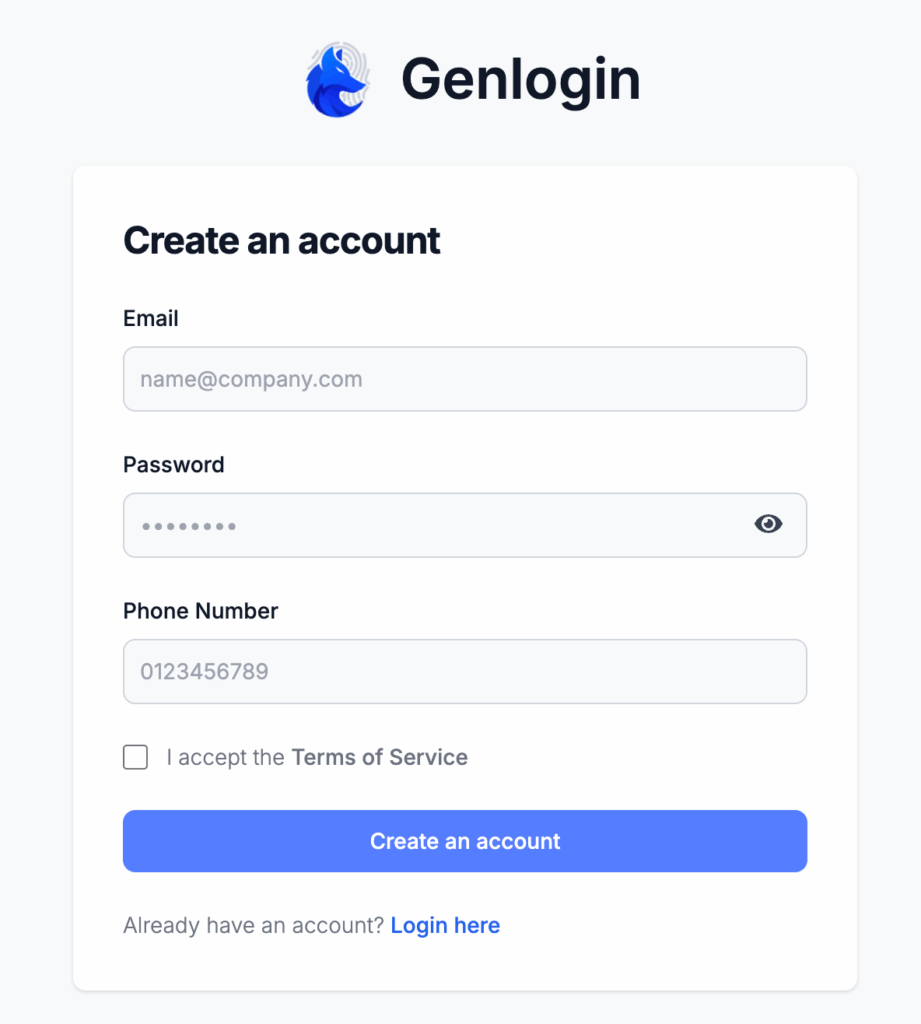Compare GenLogin with Multilogin discover your best fit!
In 2025, the demand for antidetect browsers is growing fast, especially among users managing multiple accounts across eCommerce platforms, affiliate networks, or social media. Platforms like Genlogin have caught attention for offering a low-cost solution to privacy-conscious workflows. But is it actually a solid choice for daily use, or just another browser clone with more marketing than muscle?
We’ve already compared Multilogin vs Genlogin in a dedicated guide. Now, it’s time for a closer, standalone review of Genlogin to help you decide if it’s the right fit for your 2025 stack.
What is Genlogin?
Genlogin is an antidetect browser that lets users create isolated browser environments, each with its own fingerprint, cookie jar, and IP address setup, allowing them to operate multiple accounts without platforms linking or banning them.
The browser offers a cloud-based dashboard for managing profiles, custom fingerprinting features, and proxy integration. It targets freelancers and small teams working in affiliate marketing, ad verification, web scraping, or even crypto airdrop farming.
But does Genlogin deliver the level of stability, customization, and security these workflows demand? Let’s dive in.
How to sign up for Genlogin

Getting started with Genlogin is fairly simple:
- Visit the official site: Head to genlogin.com.
- Create an account: Use your email to register and confirm your identity.
- Select a pricing plan: Genlogin offers a free trial, along with paid plans based on the number of profiles you need.
- Download the app: It’s available for Windows and macOS.
- Start configuring: Once installed, you can begin setting up your first profile.
Curious how Genlogin stacks up against Multilogin in terms of performance and features? Check out our full Multilogin vs Genlogin comparison.
Key features of Genlogin
Let’s break down what Genlogin brings to the table:
Multi-account browser profiles
Like most antidetect browsers, Genlogin allows you to create isolated profiles that behave like independent browser instances. Each profile maintains its own cookies, local storage, history, and other fingerprint-related parameters.
Basic fingerprint spoofing
Genlogin supports customization of browser fingerprints such as:
- WebGL and Canvas
- Timezone and geolocation
- Language and screen resolution
- User-agent strings
However, fingerprint spoofing is more limited compared to advanced tools. Reports indicate that fingerprint accuracy doesn’t always hold up under platform scrutiny.
Proxy support
You can manually integrate your own HTTP, HTTPS, or SOCKS5 proxies for each browser profile. There’s no built-in proxy provider or validation layer, so you’re fully responsible for setup and reliability.
Cloud sync
Genlogin supports encrypted cloud synchronization of profiles. This means you can access your browser environments from different devices, though it lacks advanced collaboration controls for team-based work.
Genlogin: User experience
Genlogin’s interface is lightweight and minimal, but not always intuitive. New users might struggle with the UI, especially when setting up their first few browser profiles. Onboarding documentation is limited, and there’s no built-in onboarding wizard or smart tips like in more mature platforms.
You’ll also need to do a lot of things manually: assign proxies, manage fingerprints, and organize extensions for each profile. This could be a dealbreaker if you’re looking for a plug-and-play solution.
Genlogin: Performance
In terms of raw performance, Genlogin gets the job done for small-scale operations. Launching profiles is fairly fast, and basic fingerprint switching works well enough for low- to medium-risk tasks like ad spying or social media account management.
But under the hood, the platform doesn’t offer deep OS-level isolation or the kind of advanced containerization found in enterprise-grade tools. As a result, Genlogin may not hold up for high-risk workflows (e.g. managing financial accounts or ad accounts on Meta/Google).
Genlogin: Proxy management
Proxy setup is fully manual. There’s no integrated proxy marketplace, proxy rotation support, or compatibility checks. That means:
- You’ll need to buy proxies separately
- Enter credentials manually
- Troubleshoot connection issues without platform-level help
This hands-off approach can lead to bans if your proxy hygiene isn’t perfect.
Multilogin, in contrast, offers smoother proxy management with built-in compatibility testing, tagging, and team-wide proxy sharing.
Genlogin: Fingerprint customization
Fingerprint controls in Genlogin cover most basic fields:
- Canvas & WebGL noise
- Audio context spoofing
- User-agent switching
- Fonts and resolution tweaks
However, it lacks deep customization features like font fingerprint spoofing, OS-level emulation, or advanced API behavior randomization, making it easier for platforms to detect patterns in sensitive use cases.
Genlogin system requirements
- OS: Windows 10/11, macOS
- RAM: 4 GB minimum (8 GB recommended)
- Disk Space: 300–500 MB
- Internet: Required for cloud sync and profile loading
Linux is not supported.
Pros of Genlogin
Affordable entry-level plans – Good for small-scale operations or freelancers
Cloud-based profile storage – Access your profiles from any supported device
Basic fingerprint spoofing – Enough for simple use cases like eCommerce or social automation
Free trial available – Try before you buy
Cons of Genlogin
Manual proxy setup – No built-in proxy marketplace or smart integrations
Limited fingerprint control – May not be enough for high-security environments
Weak automation support – No native RPA tools or support for Selenium/Puppeteer
Basic UI/UX – Could be confusing for new users
No team management features – Not suitable for agency-scale collaboration
No Linux support – Cross-platform teams might need alternatives
Final verdict: Genlogin worth it in 2025?
If you’re just starting out and want a budget antidetect browser to handle simple tasks, Genlogin could be a decent place to start. It gets the job done for basic fingerprint spoofing and account management, especially if you’re comfortable setting things up manually.
But for users needing:
- Strong team collaboration
- Scalable automation
- Advanced proxy handling
- Strong fingerprint isolation
…Genlogin may fall short.
For professional workflows, especially at scale, tools like Multilogin are better suited. With support for advanced fingerprinting, team features, strong automation integrations, and built-in proxy management, Multilogin is designed for high-performance, privacy-first operations.


